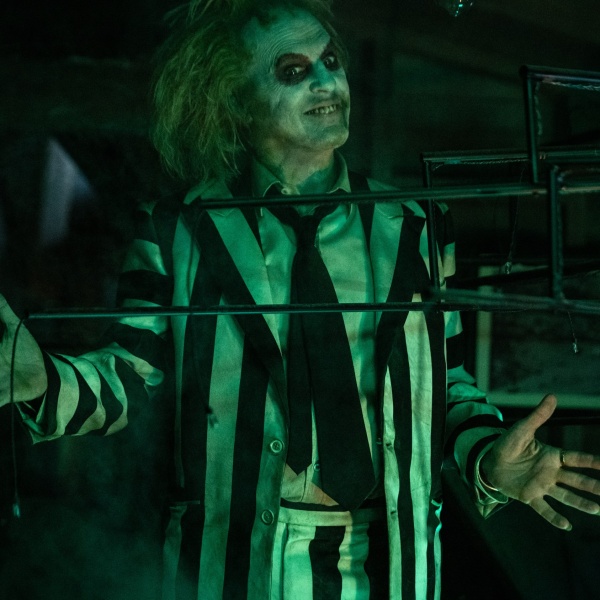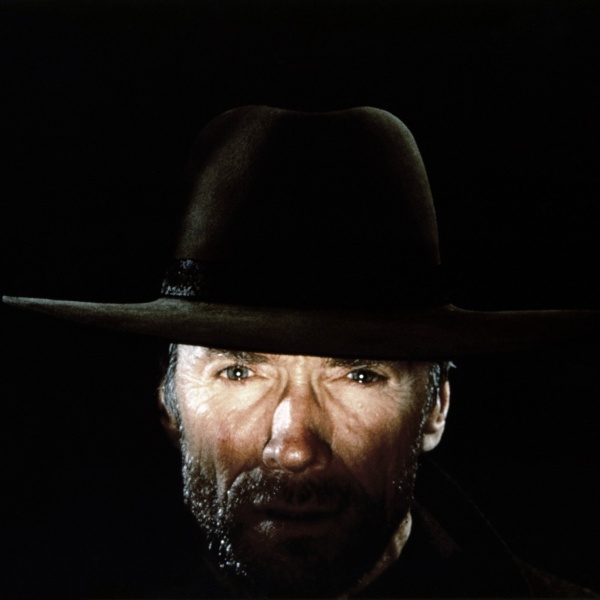To many, the term “NFT” now evokes little more than a neon haze of pandemic-era memories about easily duped online speculators who lost millions buying drawings of apes and stick figures. But a new documentary implores cryptocurrency novices to give the much-lampooned technology a second chance.
“Shark, Pickle, Cone” follows the team at Stoopid Buddy, the animation studio and production company best known for “Robot Chicken,” as it designed and built a float for the 134th Rose Parade in partnership with Nouns, a decentralized autonomous organization (commonly referred to as a DAO) that auctions off NFTs and uses the proceeds to fund art projects.
Translated into layperson terms, Nouns works as a form of crowdfunding with a few extra steps. The decentralized company uses an automated system to produce a new piece of AI-generated artwork and auction it off each day. The pictures, which all feature a character wearing pixelated glasses, are sold as non-fungible tokens that give buyers trackable ownership of a unique digital asset. But while jokes about how the proprietary “ownership” of the digital image can be negated by a simple screenshot are inevitable, buyers understand that they aren’t actually spending thousands of dollars on a picture.
The real value proposition that continues to drive the high prices of Nouns is the opportunity to participate in the governance of the decentralized company. All proceeds from Nouns NFT sales go directly into a treasury containing tens of millions of dollars. The money in the treasury can only be spent on creative projects, and a wide range of designers, filmmakers, and other artists can submit proposals to have their projects funded. Anyone who owns a Noun is allowed to vote for or against each proposal, and any project that receives approval automatically receives its funding through a blockchain algorithm without any interactions with human gatekeepers.
During a recent conversation with IndieWire, “Shark, Pickle, Cone” director Neil Berkeley, Stoopid Buddy co-founder and executive producer Eric Towner, and executive producer Chris Waters (who now serves as chief product officer of Playground Pictures but developed the film as an executive at Stoopid Buddy) spoke about navigating the roller coaster NFT movement as they made their film and why the many controversies surrounding cryptocurrency haven’t dampened their optimism about blockchain technologies.
The Stoopid Buddy team is the first to admit that they didn’t fully understand the appeal of NFTs when they approached Nouns about funding their parade float, but they weren’t about to turn down a new source of funding amid a Hollywood landscape increasingly hostile to creators. While the company had dabbled in NFTs in the past (co-founder Seth Greene famously had his Bored Ape Yacht Club NFT stolen in 2022), its founders say their real reason for working with Nouns was the opportunity to receive what felt like free money to pursue a creative undertaking. They decided to pitch the collective on the most ambitious project they could think of: Building a float out of flower petals for the fabled parade and capturing the experience in a documentary.
“I just was really fascinated by this community that had a treasury but didn’t have a boss, that was funding interesting projects,” Waters said. “I was the head of development at Stoopid Buddy, and this seemed like an interesting opportunity for us to do what we do best — which is make weird, strange content that’s kind of sticky — and have someone fund it. And that was purely my fascination. It was, ‘Whoa, there’s a treasury, and we can get funding to do something weird?’ Let’s do it!”
Both the float and “Shark, Pickle, Cone” were funded by the Nouns treasury, and the team stressed that the freewheeling project was only possible because the online community was willing to take ambitious creative swings without regard for profit margins.
“We knew what Nouns wanted was attention and absurdity, two things that we trade in,” Waters said. “We thought the juxtaposition of this new technology and this new brand, which was less than a year old at the time, with one of the oldest institutions in America (the Rose Parade), we just thought that was really funny.”
Having tackled projects as varied as producing “Robot Chicken” and manufacturing costumes for “The Masked Singer,” Stoopid Buddy was no stranger to working with talented craftspeople on complex builds. The float design they settled on — which featured an anthropomorphized shark, pickle, and ice cream cone wearing the pixelized glasses that adorn every Nouns NFT — struck a balance between the digital aesthetic of NFTs and the studio’s analog roots.

But of course, no story about NFT culture in the early 2020s comes with an entirely happy ending. After the massive crypto boom at the tail end of the COVID-19 pandemic, the speculative money pouring into the NFT market quickly dried up. The prices of major cryptocurrencies plummeted amid high-profile scandals like the collapse of Sam Bankman-Fried’s FTX, and countless NFT holders realized that the digital art they spent thousands on was now effectively worthless.
“There was obviously a lot of good that came from it like artists being discovered. There was kind of this art renaissance happening,” Towner said. “At the same time, as is always the case with new technologies and this being a new frontier, it was also riddled with scams. And I think that’s where the polarization came from.”
Crypto enthusiasts who take the long view of the technology can now look back on the Wild West environment that formed during those early years with a laugh. But watching an industry collapse amid billions of lost dollars is not a fun experience when you’re in production on a positive documentary about it.
“Shark, Pickle, Cone” distinguishes itself by being one of the most nuanced cinematic depictions of the blockchain to date, devoting equal time to the artistic potential the technology creates and the bad actors it enabled. But the team isn’t afraid to laugh about how bleak it felt when everything collapsed around them.
“I know I did,” Waters said when asked if the team ever worried that they had gotten sucked into something regrettable. “Because I wasn’t someone that had really followed the trajectory of crypto in its early days from 2010 through 2022, this was my first experience of a bear market. And it was so dire. And it wasn’t just a bear market, it was a bear market that was driven by some really bad headlines around FTX. Lots of scams, lots of people that were in it for the wrong reasons. And it felt really scary to feel, ‘We’re making a movie about an industry that’s just getting pummeled in the media.’”
The media coverage of the crypto crash prompted the Stoopid Buddy team to reexamine their anonymous financial backers with newfound scrutiny. But the deeper they dug into the structure of Nouns, the more convinced they became that they had found a positive corner of the crypto community that wasn’t a scam. The corporate structure of Nouns assured that the owners never made any kind of profit on their NFT sales, and the money had to be spent on creative projects. The funds were distributed digitally without any kind of centralized decision maker, rendering it effectively impossible for any one individual to take the money for themselves and run off.
“I think the thing that carried us was that during this whole time, we had access to the founders of Nouns, who are all anonymous. And we had seen the structure of the DAO, and saw that they weren’t making any money. So there was no rug to pull!” Waters said with a laugh. “It really was an experiment. 100% of the proceeds go into a treasury, and the only way to spend that money is if Noun holders vote. So it’s all very transparent and open.”

“It felt like the basis of the Nouns experience was pure,” Towner said, echoing Waters’ sentiments. “The cool thing is that when greed wasn’t the driving factor, the people that had the resources would choose to have fun. They would choose to have a parade and build a float. And to us, that was cool.”
Looking back on the NFT bubble of 2021, the team agreed that it’s easy to use hindsight to connect the dots that led to the massive crash. But they blame the initial rise and fall of NFT culture on the low quality of the first products sold, not the underlying technology itself. Now that some time has passed, they hope increased consumer literacy about scams will lead to a second renaissance of more promising blockchain art projects.
“Once it started, people just rushed in and started trying to sell all of these overpriced JPEGs and saying, ‘Oh my gosh, you can’t lose on any of this stuff!’ So it was not a surprise that a lot of that stuff was very thin on substance,” Towner said. “There was a lot of promise and a lot of hype without legitimacy behind it. But a lot of that has gotten weeded out.”
But for all the talk of cryptocurrency and NFTs, entertainment lovers don’t need to be interested in either topic to take note of the opportunities that organizations like Nouns can create. Stoopid Buddy already has plans to partner with the DAO on future projects, and the team stressed that the NFT community’s ultimate legacy could be providing a source of funding for the types of ambitious films and TV shows that are getting harder to make through conventional channels.
“For us, what is interesting is finding alternative forms of financing creative projects,” Towner said. “A lot of the sources of getting those cool projects made have either gone away, or people have gotten more shy about spending money on what could be really cool or interesting projects. So that’s a positive, that it opens other doors to get stuff made. Interesting stuff that might not get made otherwise.”
“Shark, Pickle, Cone” is currently available to purchase in NFT form. The film will be available to stream for free on X (formerly Twitter) in mid-June.



